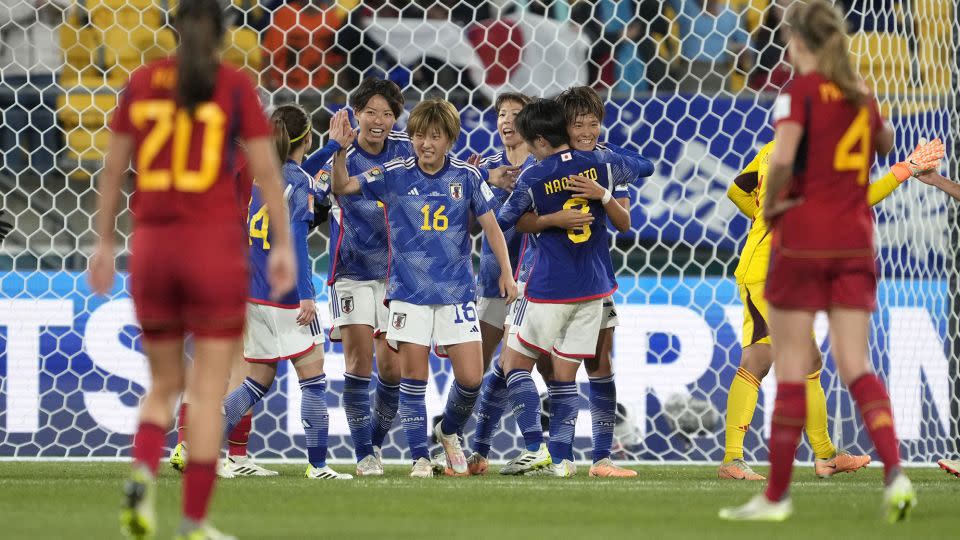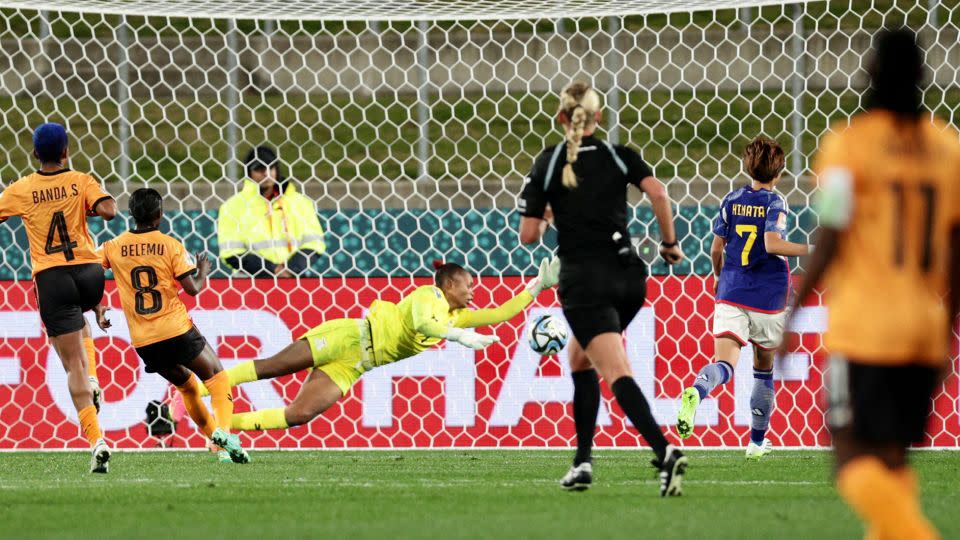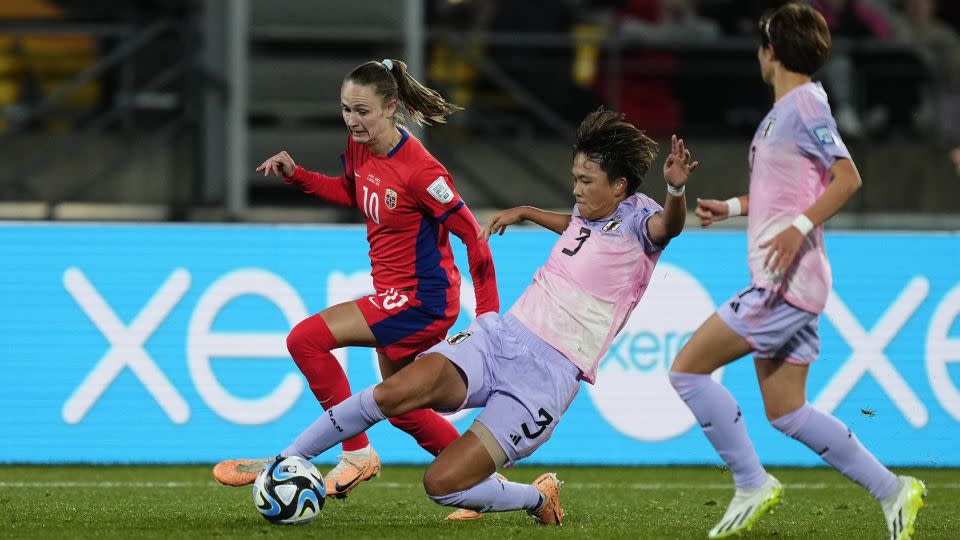Japan blooms just at the right time as the Nadeshiko looks to make new history at Women’s World Cup
Women’s World Cup 2023: Live scores, fixtures, results, tables and top scorers
Four months before the 2011 Women’s World Cup final, Japan was devastated by the largest earthquake ever recorded in the country’s history.
The earthquake triggered a tsunami causing a nuclear meltdown at the Fukushima power plant, a disaster that’s still being felt to this day.
The incident left more than 22,000 dead or missing, from the initial earthquake, tsunami and post-disaster health conditions. The cleanup is expected to last decades and cost billions of dollars.
The nuclear meltdown also ensured that the Japanese national team’s training facility based in Fukishima became a place of refuge in the aftermath of the tsunami.
This all contributed to make what happened in July 2011 in Germany even more special, though before the 2011 tournament, Japan’s players weren’t sure about competing.
“Should we really be playing football?” former Japan captain Aya Miyama told a FIFA+ documentary last year. “Aren’t there more important things that we should be doing now?”
Having entered the Women’s World Cup as an unfancied outsider, Japan proceeded to topple the US on penalties in the final, becoming the first Asian nation to win an international soccer tournament and bringing some joy to a nation in its time of need.
Twelve years later and Japan is once again unifying the country behind one common cause: supporting the Nadeshiko – a reference to the pink flower that symbolizes Japanese beauty – as it once again makes an unexpected run through the Women’s World Cup.

This time though, the team has a different task at hand: the job of revitalizing women’s soccer in Japan after some lean years for the sport in the country.
And the squad is going about it in the best way possible. Its performances so far transforming Japan into arguably the favorite for the World Cup title with the impressive nature of qualification from its group – the Nadeshiko was the tournament’s top scoring team in the group stage – and strong victory over Norway in the last 16.
READ: England’s Lauren James apologizes for red card after stepping on Nigeria’s Michelle Alozie
But outside of the fanfare that is building up around the team, the potential impact of their success back home remains at the forefront of the Japan players’ minds.
“We want to use this World Cup as an opportunity to reinvigorate women’s football in Japan,” defender Moeka Minami said after the team’s impressive 3-1 victory over Norway.
“I hope that the girls who started playing soccer after seeing this World Cup will not stop because there are not many girls around them playing soccer, but will continue to play and pursue their dreams with a strong feeling of ‘I won’t lose to the boys.’”

Pressure
There are similarities between Japan this year and the 2011 World Cup-winning team.
Both entered the tournament overlooked in favor of their European and North American counterparts, way down the pecking order of the teams expected to challenge for the World Cup title.
Japan might have been unfancied by many before the tournament, but the squad didn’t travel to the 2023 tournament thinking it was just making up the numbers.
“Of course, we have come here to win the world’s top prize,” Japan midfielder Yui Hasegawa said ahead of the World Cup. “For the future of women’s soccer, results are important. We have a lot of responsibilities, and I want to focus on the results.”

Following the 2011 World Cup triumph, Japanese women’s soccer had mixed success in building on that achievement.
Although it finished runner-up at the 2015 Women’s World Cup, Japan was knocked out in the round-of-16 in 2019 before losing in the quarterfinals of the 2020 Olympics played on home soil.
The game at club level has struggled too, and in an attempt to bridge that gap, the Women’s Empowerment (WE) League was formed in 2021, becoming Japan’s first fully-professional women’s league.
Organized by the Japan Football Association (JFA) with 11 teams, it was founded to “pave paths for young girls who aspire to become professional football players and contribute to the growth of women’s football in Japan.”
WE League chairperson Haruna Takata says success at the World Cup can go a long way to improving the sport’s standing in Japan.
“In 2011, the whole nation was so excited about winning the World Cup, so there is a sense of, ‘Why aren’t we popular?’” Takata said ahead of the 2023 Women’s World Cup.
“But there are many sports where the national team’s games attract a lot of attention, but the attendance in the regular league is low. Since Nadeshiko Japan won the championship early on, the bar may have been set higher for us.
“We were runners-up in the next tournament, but from the media’s point of view, we were not as good as they were expected to be, and they may have judged us not to have that much value.”
Blazing through the tournament
Through its first five games of the tournament, Japan has already done so much more than many expected.
It blitzed through the group stage, not conceding a goal and putting all of its opponents to the sword. Emphatic performances against Zambia and Costa Rica – 5-0 and 2-0 wins respectively – opened its campaign, but it was the Nadeshiko’s third match which transformed Japan into true title contenders.
Facing a star-laden Spain team in its final group game, with top spot in the group on the line, Japan pulled out arguably the performance of the tournament, catching the European team on the break countless times in between showing a resolute tactical fortitude in a comprehensive 4-0 victory.

The good performances didn’t stop there; Japan put in another extremely exciting display against 1995 world champion Norway in the last-16 to make it to the quarterfinals.
Between the goals of Hinata Miyazawa – who currently leads the tournament’s Golden Boot race for top scorer – the selflessness of Mina Tanaka up front and the industry from Jun Endō and Risa Shimizu at the wingback positions, Japan’s relentlessness has been one of the talking points of this World Cup.
Even Norway manager Hege Riise couldn’t help praising Japan after losing to the Nadeshiko in the last 16, calling it a “very good Japan team.”
“I’ve seen them play the group stage and they are great team with a lot of good players and tactics,” Riise said. “The combination of tiki-taka … combined with the direct play, it’s hard to defend. They (need to) continue to play their own game.”
Japan manager Futoshi Ikeda – who guided the nation’s Under-20 women’s team to World Cup success in 2018 – has built a cohesive unit, one which looks a formidable opposition to overcome.
Ikeda’s achievement is made all the more impressive given the younger age profile of his squad; most of the players he’s deploying featured for him in the successful U-20 team he coached and, therefore, are still in their mid-20s.
The team’s achievements seem to be catching the imagination back home. FIFA announced that Japan’s victory over Norway had an average audience of 6.72 million viewers, which was the highest of the tournament for Japan and more than double the second-highest. It also surpassed any of the team’s games at the 2019 Women’s World Cup.
Now, Japan faces a stiff test in the quarterfinals against Sweden, which took down the pre-tournament favorite US squad. But as it makes strides through the tournament, Japan’s players are aware of the impact they are having.
“I think all players knew the amount of preparation that led to this, and that today’s result would definitely contribute to the future of women’s soccer,” Hasegawa said after the victory over Norway.
“I think the tears at the end of the game were a release from that kind of pressure.”
For more CNN news and newsletters create an account at CNN.com

